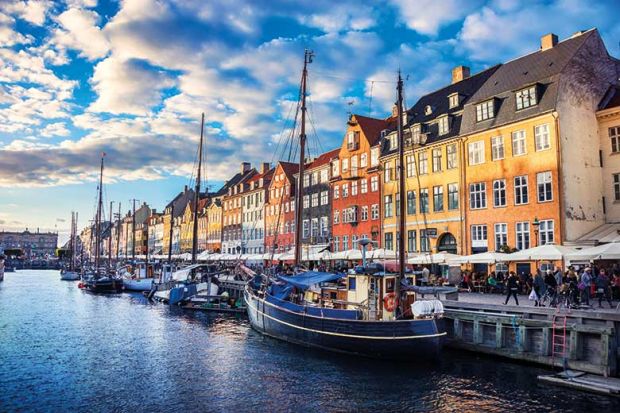Toronto: From bland to global brand
In 2016, The New York Times proclaimed that Canada was no longer a “frozen cultural wasteland populated with hopelessly unstylish citizens”, and was now “hip”. Although this statement led many Canadians to argue that we already were “hip”, the truth is, we weren’t.
When I first moved from Toronto to London a decade ago, Canada was like the nice but uninteresting wedding guest in sensible shoes. The one you were disappointed to be sat next to, but when they offered to serve as the designated driver, you were more than happy to take them up on a ride home.

However, things have changed in 10 years. Perhaps, as The New York Times suggested, it is our yoga-practising leader, not quite as clean-cut as he was but still offering a stark contrast with the one to the south. Perhaps it is the fact that we cared about the environment long before members of Extinction Rebellion blocked traffic to Waterloo Bridge. Or perhaps it is the 1.5 billion YouTube views of Hotline Bling, the lead single from the Drake album Views, which proudly features a giant CN Tower on the cover. But, whatever the reason, Canada, the once bland wallflower, seems to have had a massive international rebrand.
Globally, Canada is to 2019 what Australia was to the late 1990s – hot. British friends remark on my “cool” faded summer camp gear and ask where they can get some of their own; maple syrup has become the artisanal sweetener of choice; and, at London dinner parties, I’m often told “I’ve always wanted to go to Canada”. Rather than correct them – and point out that, actually, they probably only thought of going in the past year or so – I give them an itinerary for my newly rebranded hometown.
The Drake (no relation to the rapper) is the place to stay. A (yes) hip boutique hotel in the heart of Queen West. Its rooms are quirky; its on-site entertainment venues feature Canadian and international bands; and you can choose between morning coffee in the cafe, sushi from the raw bar, or cocktails on the rooftop Sky Yard, a local haunt. Cocktails on rooftops or, more accurately, beers on patios are typically Torontonian.
From the hotel, cross the street to pick up some Canadiana kit from the Drake General Store – a hotel gift shop gone haywire. Here you’ll find campfire onesies, touques (Canadian bobble hats), and all forms of hipstered Canuck nostalgia. Keep strolling down Queen Street to Toronto’s staple independent bookshop, Type. Pop up Ossington to flip through the vinyl at Rotate This and then head further east down Queen to The Honey Pot – the first legal weed store in town.
If the stars align, your trip may coincide with the free, monthly “Astronomy on Tap” put on by the University of Toronto in the beautifully refurbished Great Hall. Promising to be “technobabble-free”, you can get a snack-sized space lesson with a pint in hand! To keep on the university theme, a stroll around King’s College Circle will give you a sense of impressive early colonial architecture. Alternatively, make a reservation at the Gallery Grill for upscale, locally sourced cuisine in the striking Hart House varsity building.
For something less scholarly, walk up Bay Street from the university to Bothers, a new buzzy restaurant and wine bar above Bay station, where the subway trains rumble below the concrete floors and the colourful menu is ever-changing.
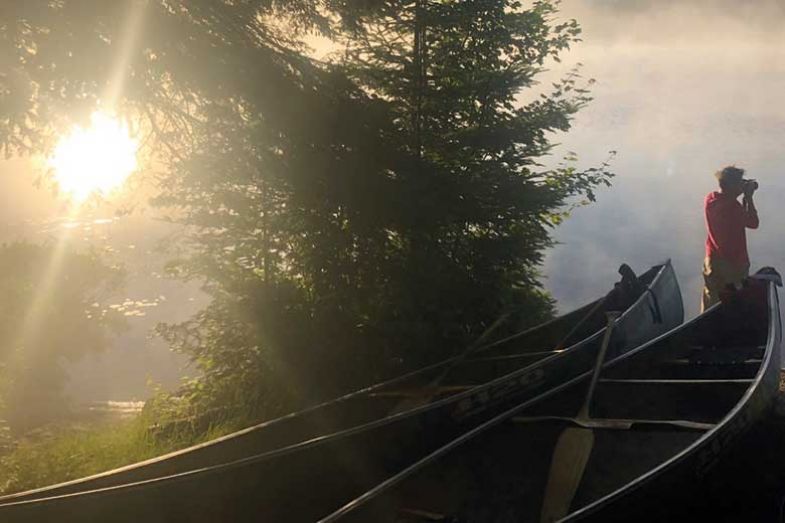
A weekend must is Kensington Market, a bohemian neighbourhood filled with vintage clothing shops, blasting reggae music and multicultural food sellers. Grab a woodfired bagel at NU Bagel, a Rasta Pasta (Italian-Jamaican fusion doesn’t sound like it should work, but it does), or, my fave, Chilean empanadas at Jumbo Empanada. Then make your way to the El Rey mezcal bar for a tart tequila cocktail. Still hungry? Step out of the market into China Town for steamed classics at Mother’s Dumplings. To get the right gear, check out a Kensington staple, Courage My Love, the go-to for incense, bangles and second-hand cowboy boots.
If you have a third day in Toronto, head west to Sterling Road. All nestled together is the Museum of Contemporary Art, the Anansi Press bookshop (a publisher founded in the 1960s known for publishing Canadian authors such as Margaret Atwood) and local draft brewery the Henderson Brewing Co.
Alternatively, for some in-town nature, drive to the east end of Toronto to the Scarborough Bluffs, a long waterfront escarpment complete with a beach. It is stunning and I promise you won’t believe you are still in a city. But if you are in Toronto in summer and want a taste of totally untouched wilderness, drive north to Algonquin Park for a few days. Here, you will canoe through pristine lakes, dine next to moose and have a sense of space unparalleled in Europe. The Portage Store will set you up with all the kit you need.
During the winter, head to a sugar shack or maple syrup festival. See the sapping of maple trees, take a wagon ride and eat pancakes and “Tier sur la neige” – hot maple syrup on snow. The Sweet Water Season (near Milton) gives a First Nations take on the delicacy, in a reconstructed Iroquois village.
I’m not sure if we’ll ever be really “stylish” (I still like sensible shoes), but a “frozen cultural wasteland” Toronto is not. Grab a spot on a patio. Have a beer, or a bud (Canadian name for a joint…it’s legal now), and chat with some locals. Because rebrand or not, we’re still probably the nicest people you should hope to be sat next to. And we’ll still probably give you that ride home.
Kaitlyn Regehr is a lecturer in media and director of the Film, Media and Culture Research Cluster at the University of Kent. She would like to acknowledge her brilliant friends and family in Toronto, who keep her in the loop, with a special thank you to lifestyle guru Zoe Shapiro.
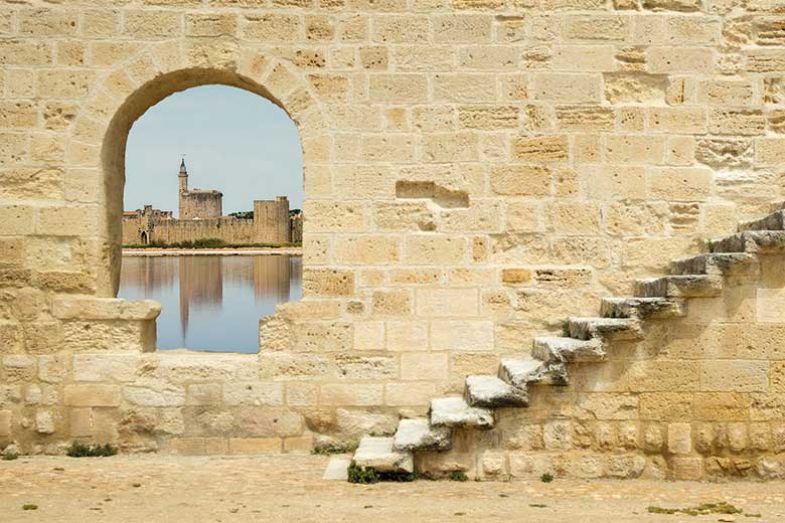
Nîmes: Memory making
Ever since Pierre Nora first introduced the concept nearly three decades ago, les lieux de mémoire, or memory sites, have become standard parlance for French historians. Although the term has the same elasticity as a freshly made nougat bar, it nevertheless reminds us that a place’s meaning is not set in stone. Certain places are particularly prone to becoming objects of contested meanings: worn and weathered footballs over which opposing ideological or political camps battle for possession.
Since a French historian invented the term, it is not surprising that France seems to be ground zero for such sites. Just think of the Vendée, whose revolt against the revolutionary government between 1793 and 1796 cost nearly 250,000 lives. Or Vézelay, whose Protestant defenders defied a brutal, eight-month siege by Charles IX’s army during the 16th century’s wars of religion. Or Versailles, Vichy or Verdun? And that is only for the Vs!
When it comes to the Ns, Nîmes figures near the top of the list, given its rich history dating back to the Roman period. Many years ago, I had the great fortune to spend two years in this small, southern city that was both the source and subject of my doctoral dissertation and first two books. And what it offered, I discovered, was not just a remarkable array of ravishing historical sites but an equally remarkable lesson in how ingenious local notables at times reinvented the meanings of these same sites.
The Roman heritage is what mostly draws visitors to Nîmes (the name rhymes with “jean” – a happy coincidence because the word “denim” derives from “serge de Nîmes”). The city is a trove of ancient ruins in varying states of picturesque decay. Nestled in its heart are the Roman amphitheatre and temple (known as the Maison Carrée), both of which are largely intact – possibly explaining why Unesco reserved the sought-after World Heritage Site designation for the more degraded Roman arena in neighbouring Arles.
If you decide to hike up Mont Cavalier, the stout hill that rises above the city, you will reach the less intact yet in many ways more impressive ruin of La Tour Magne. A dry-stone tower whose irregular shape might have been the work of a young Gargantua, the edifice is the crown jewel of the Roman wall that once surrounded the city.
Yet, to my mind, what is most interesting is what lies outside the walls. Not the Pont du Gard, mind you: the Unesco-designated three-level Roman aqueduct you can find by following the traffic-jammed roads that lead to it. Instead, I am thinking of nearby mountains and swamps – namely, the Cévennes and the Camargue. Although they could not be more different in terms of topology and geology, the two sites have been as inexhaustible a source for changing meanings as the local source for Perrier has been for green bottles of bubbly water.
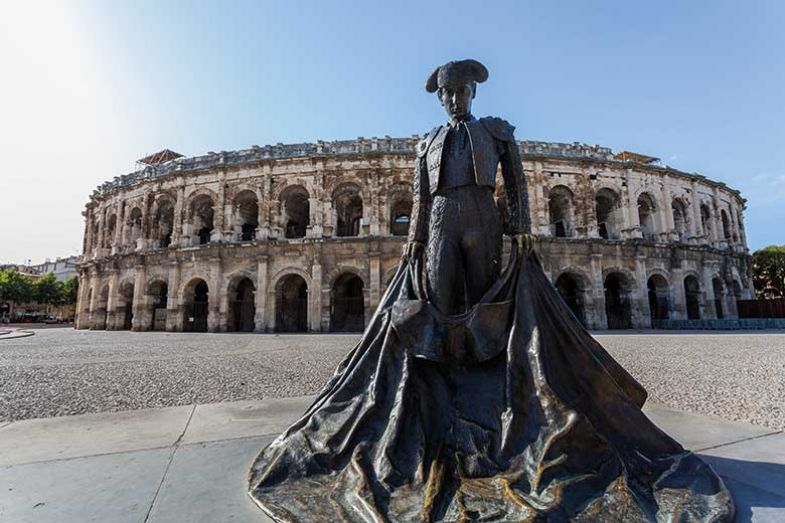
The Cévennes lie some 40 kilometres north of Nîmes. These arid and craggy hills are a scene of austere and often gripping beauty that, nearly 150 years ago, Robert Louis Stevenson rambled across in the company of a very French donkey named Modestine. The region’s institutional memory, the Musée du desert, meanwhile, is the focus of an essay by the historian Philippe Joutard, in Pierre Nora’s three-volume, Mitterrand-era collection, Les Lieux de mémoire. Located in the village of Le Mas Soubeyran, the museum has become, in Joutard’s phrase, “a high place of French Protestantism”.
It contains texts and artefacts from the arduous history of French Protestants, a past reflected in the very word “desert”. The word refers not to the region’s arid soil, but instead to the Huguenots’ admirable resistance to the French monarchy’s efforts to uproot them from French soil. Tellingly, this past was invoked during the German occupation of France, when Protestant leaders met under the oak trees of Le Mas Soubeyran to launch their resistance against the collaborationist Vichy government.
Stretching to the south of Nîmes, wedged between the Rhône River and Mediterranean coast, is a dramatically different, yet oddly similar memory site: the Camargue. Long disregarded, if not disdained, by Paris, this expanse of brackish lagoons and isolated villages morphed into a site of Provençal resistance and romance come the 19th century. This was the work of the Félibrige, a group of Provençal writers led by the Nobel prizewinner Frédéric Mistral. Their effort to reclaim the region’s history was little more than an effort to reinvent it – an effort, moreover, that was mostly successful. The bull, once a source of labour, was transformed into a mythic creature of resistance; the network of lagoons, always a source of sparrow-sized mosquitoes, was turned into an equally mythic fortress of resistance against the centralising furore of republican France.
Behind these tales, of course, lie actual wonders, ranging from the rustic attraction of the region’s principal town, Saintes Maries-de-la-Mer, to a local sport known as la course camarguaise. Those who (understandably) dislike the corrida, or traditional Spanish bullfighting, might well enjoy the course. It turns the world of the corrida upside down, making the bulls the stars, with careers that can run several years. As for the human contestants, they are anti-matadors, who spend their time trying to pluck off colourful cords from the bull’s horns while doing their best not to get gored.
With the prospect of savouring a glass of pastis at a local cafe afterwards, there are few better ways to spend a Sunday afternoon.
Robert Zaretsky is a professor in the Honors College, University of Houston.

Denmark: From longboat to party boat
My earliest memories are of Denmark, where we lived when I was small. My affection for the country remains strong, and is now shared by my family.
Most visitors to Denmark stay in Copenhagen, a fabulous city, small enough for you to walk everywhere. It has museums, a superb new opera house, great restaurants, the famous Tivoli pleasure gardens and the marijuana-scented “free city” of Christiania. I always advise first-time visitors to take a boat trip, since the cruises depart from the lively and historic Nyhavn district in the heart of the city and go round the harbour, past the Little Mermaid statue, and then back again through the canals. You can also rent a small boat and do your own tour. My family are particularly keen on what they call the party boats, which can be seen in particular abundance on Friday and Saturday nights, packed with revellers who take on board their own food, drink and music.
But just as visiting London does not mean you have seen England, so visiting Copenhagen does not mean you have seen Denmark. To get a real sense of the country, you need to go beyond the capital – and stay for longer than a weekend.
A two-week holiday can accommodate adults and children of all ages. It can incorporate museums, beaches, open-air history, glorious countryside and even theme parks (the original Legoland is in Denmark). And because Denmark is a small country, you can see a great deal of it – particularly following the completion of its great bridge-building strategy, joining up the main Jutland peninsula with the large islands of Funen and Zealand to its east. You can even go over the Øresund Bridge (familiar to Nordic noir addicts) to Sweden if the fancy takes you.
But don’t stay away from Denmark for too long. The country has produced some exceptional painters, architects and furniture designers and it is littered with galleries and artists’ workshops of all kinds, reflecting an ongoing dynamic creativity. Just near Esbjerg is Ribe, Denmark’s oldest town, with its magnificent cathedral and gallery housing an important collection of Danish artists. Copenhagen has the Danish Design Museum and the Glyptotek art museum, both well worth a visit. But my favourite destination for visual art is the Louisiana Museum of Modern Art. Perched on the edge of the sea just north of the capital, it holds wonderful exhibitions.
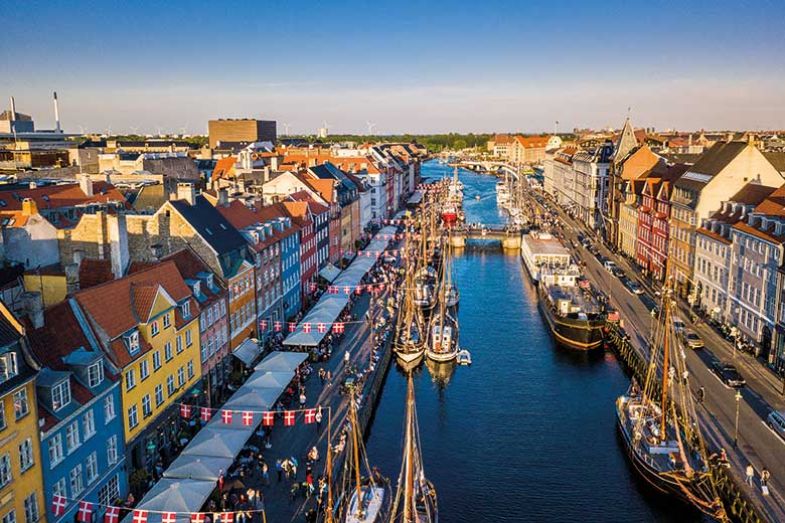
Traces of Denmark’s long Viking heritage remain all over the country. There are Viking theme parks, of course, but better to head for the impressive rune stones of Jelling in mid-Jutland, which were erected in the 10th century by Gorm the Old and his son Harald Bluetooth. They have not been prettified and rise impressively beside Gorm’s and his wife’s burial mounds.Closer to Copenhagen is the Roskilde Viking ship museum, and the added bonus of visiting Roskilde is that you can also take in the great cathedral where the kings and queens of Denmark were buried.
Roskilde is easily accessible by train, as is Odense, the city that houses the Gothic cathedral of St Cnut, a Viking warlord who raided England just after the Norman conquest and who met his gory end by the altar of the original church. Also in Odense – Funen’s main city – is the Hans Christian Andersen House, where you can stand in the gigantic footprints of Denmark’s most famous (and probably ugliest) writer and marvel at his capacity to sponge off other people while creating some of the most memorable children’s stories in the world.
Back in Jutland, near the city of Aarhus, is the new Mosegaard Museum, an architectural jewel that houses several important collections, including Iron Age and Viking artefacts. It also houses Graubolle Man, one of the preserved Iron Age Bog People. Fans of Seamus Heaney might also want to visit the Silkeborg Museum, which houses the remains of Tollund Man, who was ritually sacrificed some 2,400 years ago before finding his way into Heaney’s famous poem likening his Iron Age fate to that of those who died in Northern Ireland’s sectarian violence.
But if all that history gets too much, Denmark is also great for food and drink. You can eat well for moderate prices, or go upmarket and sample some of Europe’s finest restaurants. Personally, I don’t think anything can beat sitting at the waterside on a sunny Danish day with a plate of fish, a cold Carlsberg, and an akvavit chaser. Skol!
Susan Bassnett is professor of comparative literature at the University of Glasgow and professor emerita of comparative literature at the University of Warwick.
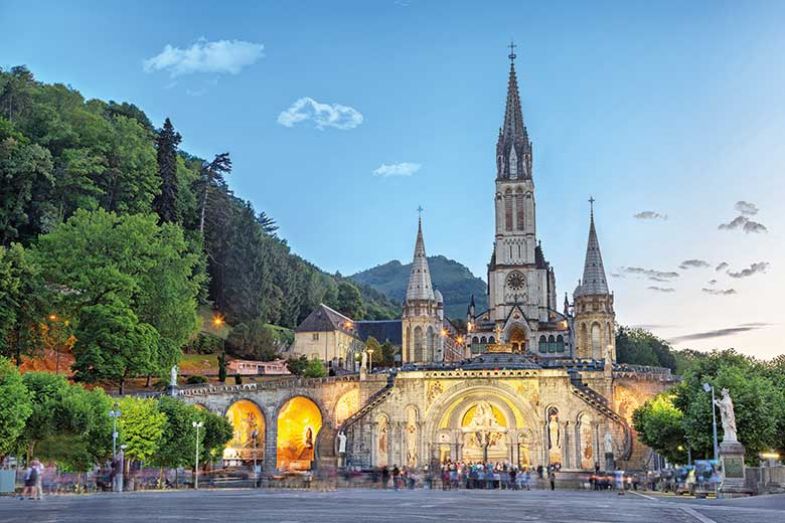
Lourdes: Resurrecting the spirit
Have you heard the one about the man who visited Honolulu without seeing the beach, and Edinburgh without climbing to the castle? I am that man.
I went to Lima without glimpsing an Inca ruin, except for dusty stones heaped inartistically outside a grimy window at the National University of San Marcos. I once had hopes of “seeing America”: I have been in 30 states without beholding anything except lecture rooms and airport lounges. Academic globe-hopping makes me abhor travel. I recoil from conventional holidays: too impatient for queues, too staid for adventure, too sated for culture-vulturism, too sybaritic for the transport and lodging I can afford. In rare spells of leisure, the holiday I crave is at home, with a libation at my elbow and light reading in my lap, in the garden sedulously perfected by my wife – who is a perfectionist in everything save choice of husbands.
Still, inertia of the kind that menaces me demands a change of pace and purpose. I recommend a few days’ pilgrimage. I go to Lourdes at the beginning of every May, with a Catholic sodality, to help tend the sick. The experience is harrowing, demanding, exhausting and often distressing, but it will do anyone good.
The setting feels like a fantasy: mountain-rim in sharp relief; romantic castle towering over town. Serenely the basilica dominates the valley, in decorous stone, with glints of gilding and a delicately ascending spire. Around the brimming river are calm, well-tended messuages and shrines, where the voices of prayer from the grotto are often the only audible noise. For escapees from penance, pricey cafes and shops full of Catholic kitsch tumble down the slopes.
The Order to which I belong takes the place over for a week. We come in our thousands, from all over the world, bringing with us many hundreds of sick and disabled, lame and blind, in search of a miracle.

We brancardiers – as male helpers are called – have a choice of hostelries: thin partitions, or narrow beds. I like the latter. We have no time for troubles of our own. We rise early, struggle into our uniforms of boiler suits and berets, and set about cleaning the wards, rousing and dressing the malades, helping the more disabled of them through their morning ablutions, getting them dressed and breakfasted, before joining them on an enlivening round of devotions, masses, penitential exercises, baths and excursions to holy or wholesome sites.
They travel in processions of old-fashioned voitures – heavy, cumbrous, toilsome chariots that we drag, short-winded, up and down precipitate hills. I am among the most ham-fisted, incompetent and medically ignorant of the helpers, but our Order has plenty of physicians and nurses to make up for my deficiencies and cope with emergencies. My young confrères relieve the older among us of the duty of watching over the wards all night. Meals are hurried, but there are nocturnal moments for carousing off duty over flowing vermouth and thin chips en terrace.
My sodality, if it has a fault, is rather snooty and replete with princesses and millionaires. It is an additional source of pleasure to see a princess swab the lavatories, or a millionaire feed the sightless or limbless, or a grande dame bed-bathing the less mobile pilgrims and tending sores with her own hands. Helpers risk their health in the cruelly capricious weather; some years are torrid, some icy. Last year I had the honour of bearing a torch along the line of the nightly march of thousands of pilgrims from the wards to the basilica, who chant the Ave and Laudate in a score of languages. It involved standing to attention for an hour and a half in cold, cascading rain, before returning to the wards in clinging, sopping boiler suit to help with the malades’ bedtime routine.
How many miracles happen? My ministrations do my sick fellow-pilgrims little good, but they magnify me. Lazarus rarely leaps from a deathbed, in my experience, but everyone is transformed. The story circulates of an Irish priest who returned home from Lourdes still in his wheelchair.
“No miracle then, Father?” enquired his housekeeper.
“I’m still crippled,” the priest replied. “But the miracle is that I no longer mind.”
Felipe Fernández-Armesto is William P. Reynolds professor of history at the University of Notre Dame.

The Yorkshire Dales: Walking the broad acres
I was born to open spaces. Growing up in a cramped two-bedroom, three-generation rented terrace, my habit from the age I could toddle was to wander and wonder on the nearby Hesketh Estate. For 18 years, I walked its open fields, step-stoned its rivers, missed tackles on its sports pitches and watched mad jockeys fling brave chasers at its open ditches, around the two-mile jumping circuit in its south-east corner.
Northamptonshire is an underrated county. But for two score years and more I’ve been a northerner. The accent is in denial, but to live and work half an hour from the coast and two great cities (Liverpool and Manchester) is privilege indeed. The train gets to London in an hour and three-quarters: two hundred miles without a stop. But, faced with the prospect of interminable contraflow, the car seldom heads south. The Lakes can be reached in a single circle of the minute hand, and they are beautiful indeed – but knowingly so. And though you can find solitude there, you need to search for it, while, for distant views and stunning sunsets, you need to climb.
So, for me, the steering wheel turns right at Lancaster, towards the Yorkshire Dales.
Ingleton, still within reach of the commuter into Manchester or Leeds, is despoiled by the caravan park squashed under the viaduct. But half a mile out of town, you’re on the moor. Described as the most beautiful bus route in the UK, the road to Hawes sweeps over the Dales, Whernside to your left, Ingleborough and Pen y Ghent to your right.
Water pours through carboniferous limestone at Ingleton Falls and carves out caves at White Scar. Two miles on and a viaduct without desecration, the Ribblehead, carries the Settle-Carlisle railway line a hundred feet above your head. This is a place to dump the car and pull on the boots. You could attempt the Yorkshire Three Peaks challenge: the 24-mile route that includes more than 1,585m of ascending is supposed to be completed in less than 12 hours. Or you could just stroll in a gentle circle across the wide expanse and end up back at the tearoom in the old Ribblehead station building.
Driving on, after 30 minutes of stunning views you’re in Hawes, listed as England’s highest market town: a place of pubs, proper shops and cafes (try the one next to Barclays Bank) that thrives on a sunny day.
Back to the solitude. The road to Muker is more suited to a Mini than a Chelsea tractor, weaving its way past fast-flowing streams, all bridges and bends. A car park by the River Swale is the beginning of a climb to the village of Keld, with a gentle stroll back along the dale.
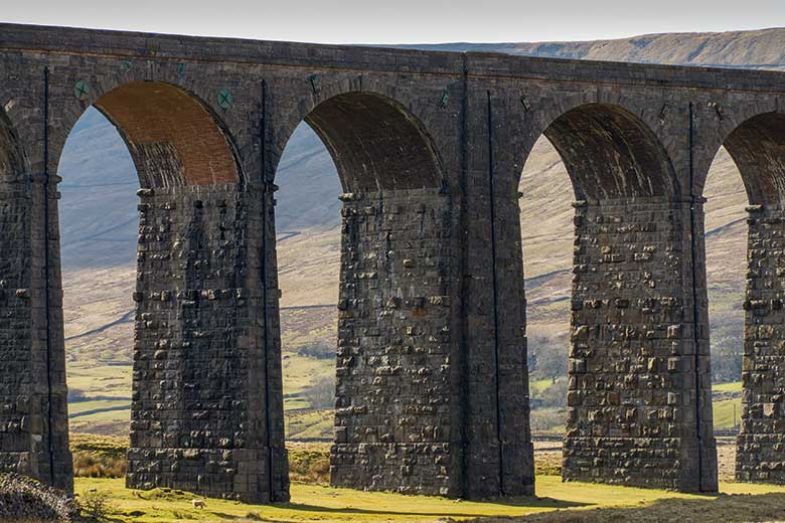
Follow the river east to the stunningly located Reeth. Containing enough people to sustain but not to spoil, it has three pubs around its green, as well as places to eat, sleep, play or paint. If you’ve climbed on previous days, take the river walk east, but be prepared for several hundred stone steps beyond Grinton as you arc north and swing back.
We’ve come from the west, but there is a route to Reeth that rivals that from Ingleton to Hawes, over the top from Leyburn. Rattling over the cattle grids, hills shimmering in the distance, you’ll feel at peace with the world as long as you don’t look right, towards the red flags marking the firing range of the Catterick Garrison.
So where do we finish? The racecourse “back home” fell into the liquidator’s hands last year: hands doubtless well aware of the value of land within commuting distance of the capital. But this is no time for childhood melancholy. Let’s be grateful for North Yorkshire’s broad, still unspoiled acres.
Set the alarm, grab your warmest coat and drive up the narrow road from West Witton at dawn. Clamber out at the top and watch the thoroughbreds from Middleham’s 11 stables approaching at 40 miles an hour as they tackle the steeply inclined gallops. Then dive down to the market square as the horses walk back along the cobbled streets. A cooked breakfast outside the pub and you’ll rarely have felt more alive.
John Cater is vice-chancellor of Edge Hill University.
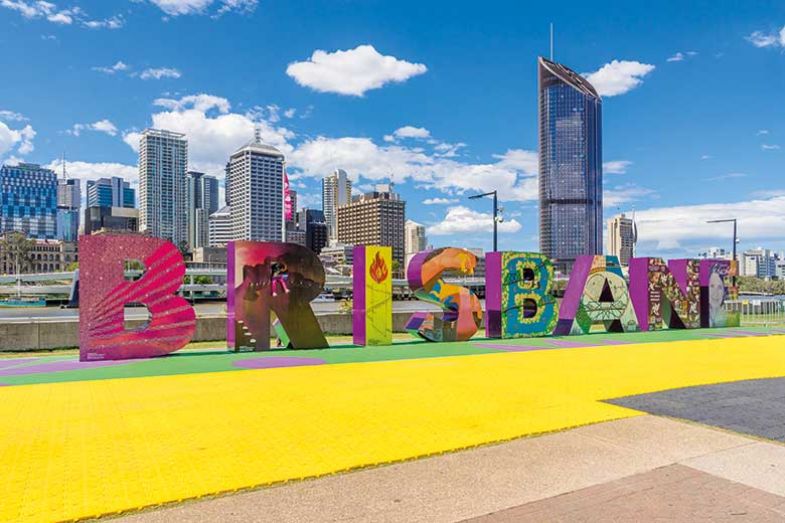
Brisbane: Loud, proud and charming
Brisbane has many claims to fame. The city affectionately described by locals as Brisneyland or BrisVegas was the world’s busiest submarine port during the Second World War. Thirty years ago, it was the host of Expo 88. It is the home of the Gabba cricket ground, the Bee Gees and the late Crocodile Hunter, Steve Irwin. It is the birthplace of Lucas’ Papaw Ointment and that Australian delicacy, the lamington.
Yet in the not-so-distant past, Tourism Australia promoted the city not as a destination in itself but as “The Gateway to the Gold Coast” or “A Portal to the Pacific”: a mere rest stop before the thrill rides at Dreamworld or an underwater adventure on the Barrier Reef. Brisbane’s other nickname, the Cinderella City, is a reference to her neglect and a dig at her older stepsisters (neither Sydney nor Melbourne are ugly, of course, but both are incredibly vain).
The nickname, however, also reflects her tale of rags to riches – and riches to riverside living with city views. A subtropical paradise with 280 days of sunshine a year is not a bad place to live – or visit.
Sure, June is upon us, but let’s get one thing clear: in Brisbane, there’s no such thing as winter. At a balmy 22 degrees, you won’t need your ear warmers or Ugg boots. Of course, you’ll see locals who insist on both, and in King George square, there’ll be babies zipped up in ski suits, but this is beside the point. The city itself has never (repeat never) recorded a temperature below zero.
So, pack togs and flip-flops because your first stop is South Bank. This flourishing inner-city suburb is the microcosm of Queensland: surf, sun and, more recently, electric scooters. At present, some of the scooters are out of order after hackers changed the audio instructions to offensive messages, such as, “No! F@!& off! You’re standing on me!” The scooter operator, Lime, has refused to comment, while the scooters themselves, known as Limes, have been rebranded by angry commuters as lemons.
In the parklands, away from the fuss, there’s a rainforest walk with lazy blue-tongued lizards, tropical fish and a pair of squawking lorikeets, appropriately named Kath and Kim by the council. In every direction, there’s picnic pavilions and sausage sizzles, cascading water fountains and, overhead, a canopy of magenta bougainvillea. In the heart of the park, near the throbbing Piazza, there’s a playground that resembles a circus, with tightrope walks, a star-shaped swing and, to the crowd’s delight, a giant hamster wheel with spinning kids inside.
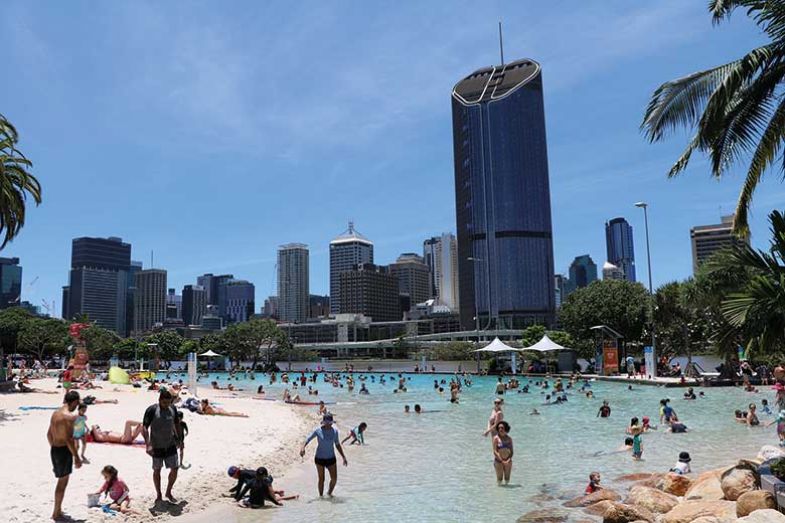
Further along, there’s a popular Thai restaurant that overlooks a lily pond with singing frogs and the odd mosquito. For $30 (£15), you can order the house specialty: Moreton Bay Bugs with garlic drizzle, served on a bed of steamed greens. Beyond the bugs – both edible and non-edible – there’s a walking trail that leads to the city’s soul: a sparkling lagoon, fenced with palm trees and enclosed by a halo of gleaming white sand. Streets Beach, the only man-made metropolitan beach in Australia is a swimming hole in the city. And of course, it’s patrolled by life guards all year round. Grab a spot in the shade, if you can find one, and as you crack open a beer, take a moment to remember your friends in Melbourne; it’s 6 degrees there.
In August, the carnies come to town for the Ekka, or the Royal Queensland Show. Tickets are reasonably priced but cheaper with a Twilight Pass or a discount code: usually “FlyingPigs” or “LlamaSelfies” (whatever is the star attraction of the year). Germaphobes will warn you to save your dollars and stay home: the Ekka flu, whether a real malady or an enduring myth, always scares some folk away. But since the opening of the show in 1876, germs have closed it only once: in 1919, when, at the height of the Spanish flu, the site was used as a makeshift hospital.
Of course, the show, like the city itself, has evolved over the years. An early competition for the best manure has been replaced with cow paddy bingo, while a contest for the fastest walking horse is now a wild colonial wagon chase. Sideshow Alley, once a mere stage for illusionists and jugglers, is now a colourful blaze of neon rides and cleverly rigged games: knock ’em down, bust-a-balloon, and the infamous laughing clowns. In the arena, after dark, bumper cars are upgraded to V8 supercars, and a guy on an electric guitar strums out a surprisingly recognisable, even likeable, rendition of Waltzing Matilda. After the singalong, a drawn-out countdown erupts into fireworks, while a tiny spark sets off Dave the Human Cannonball; the closing bang is immediately followed by the even louder roar for an encore.
Reader, this is Brisbane: obnoxiously loud, almost offensive, but charming in her ruckus, her obscurity and her secret ambitions.
Also in that tradition is another annual ritual: The State of Origin. A best-of-three rugby league match between Queensland and New South Wales (the Cane Toads and the Cockroaches), the Origin is the pinnacle of Australian sport. If the Mighty Maroons are up, then you’re in luck; there’ll be two-for-one meals at your local pub and a free round on Baz before he gets kicked out. If the Maroons are down, it’s best to avoid the pub altogether.
If you’d rather rise above the carnage, there’s the 80-metre climb to the top of the Story Bridge: one of only three legally climbable bridges in the world. Australians never break the law.
But Brisbane is a law unto herself. She’s not coming of age and she’s not the most mature of her sisters. She’s not always a positive role model, especially when it comes to profanities, but she’s not, as Doctor Who once said, a negative interface to the universe. She’s simply a curiosity. Aren’t we all?
Kate Cantrell teaches English literature and creative writing at the University of Southern Queensland.
POSTSCRIPT:
Print headline: A change of perspective
Register to continue
Why register?
- Registration is free and only takes a moment
- Once registered, you can read 3 articles a month
- Sign up for our newsletter
Subscribe
Or subscribe for unlimited access to:
- Unlimited access to news, views, insights & reviews
- Digital editions
- Digital access to THE’s university and college rankings analysis
Already registered or a current subscriber? Login
